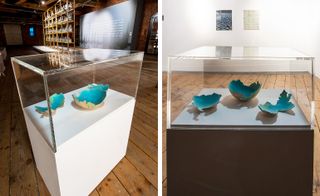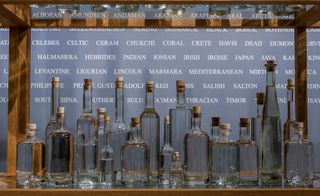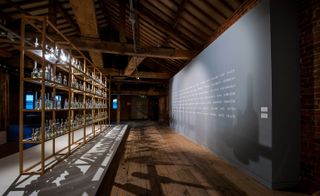Gaia theory: Tania Kovats’ Evaporation makes art of the health of our oceans
Art is arguably at its most effective when it reflects the pressing issues affecting the world. So it's all the more poignant that artist Tania Kovats’ new installation at the Manchester Museum of Science and Industry (MOSI), Evaporation, has climate change at its heart.

Art is arguably at its most effective when it reflects the pressing issues affecting the world. So it's all the more poignant that artist Tania Kovats’ new installation at the Manchester Museum of Science and Industry (MOSI), Evaporation, has climate change at its heart.
Opened last week as part of the global festival on climate change, ARTCOP21, Evaporation features three bowls containing solutions of salt and blue ink, which evaporate over time. This leaves behind a crust of salt crystals in concentric rings, mimicking the tides of the Earth: every time someone sees it, the ‘waves’ will have changed. Featured alongside this work is All the Sea, featuring glass bottles of water collected from the Earth’s 200+ seas by a global network of people determined to have these water sources collected in one place.
The project is the second to be facilitated by the ecologically-minded arts association Cape Farewell’s Lovelock Art Commissions. The titular James Lovelock's Gaia hypothesis posited that the world is an interconnected super-organism, and the state of the oceans a way of ascertaining the health of this system. Evaporation’s dried waves become all the more haunting in the face of rising sea temperatures, making the work a salient reflection of the possible fate of the planet’s oceans. Given the forthcoming UN Climate Change Conference in Paris in December, Kovats' sensitive and engaging work will, hopefully, help to spur a little more action in the fight against one of our generation's most significant – and divisive – global bugbears.

Evaporation, the titular installation, features three bowls containing solutions of salt and blue ink, which evaporate over time

This leaves behind a crust of salt crystals in concentric rings, mimicking the tides of the Earth: every time someone sees it, the ‘waves’ will have changed

Alongside this is All the Sea, featuring bottles of water collected from 200+ seas around the globe

There are still 36 other bottles from the world’s remaining seas to be added over time
INFORMATION
Evaporation is on view until 15 May 2016
ADDRESS
Museum of Science and Industry
Liverpool Road
Castlefield
Manchester, M3 4FP
Wallpaper* Newsletter
Receive our daily digest of inspiration, escapism and design stories from around the world direct to your inbox
-
 Get to know Issey Miyake’s innovative A-POC ABLE line as it arrives in the UK
Get to know Issey Miyake’s innovative A-POC ABLE line as it arrives in the UKAs A-POC ABLE Issey Miyake launches in London this week, designer Yoshiyuki Miyamae gives Wallpaper* the lowdown on the experimental Issey Miyake offshoot
By Jack Moss Published
-
 Eurovision unveils its 2024 stage, designed by Beyoncé's Renaissance Tour creatives
Eurovision unveils its 2024 stage, designed by Beyoncé's Renaissance Tour creativesThis year's stage design aims to bring the audience into the performance more than ever before.
By Charlotte Gunn Published
-
 Ikea meets Japan in this new pattern-filled collection
Ikea meets Japan in this new pattern-filled collectionNew Ikea Sötrönn collection by Japanese artist Hiroko Takahashi brings Japan and Scandinavia together in a pattern-filled, joyful range for the home
By Rosa Bertoli Published